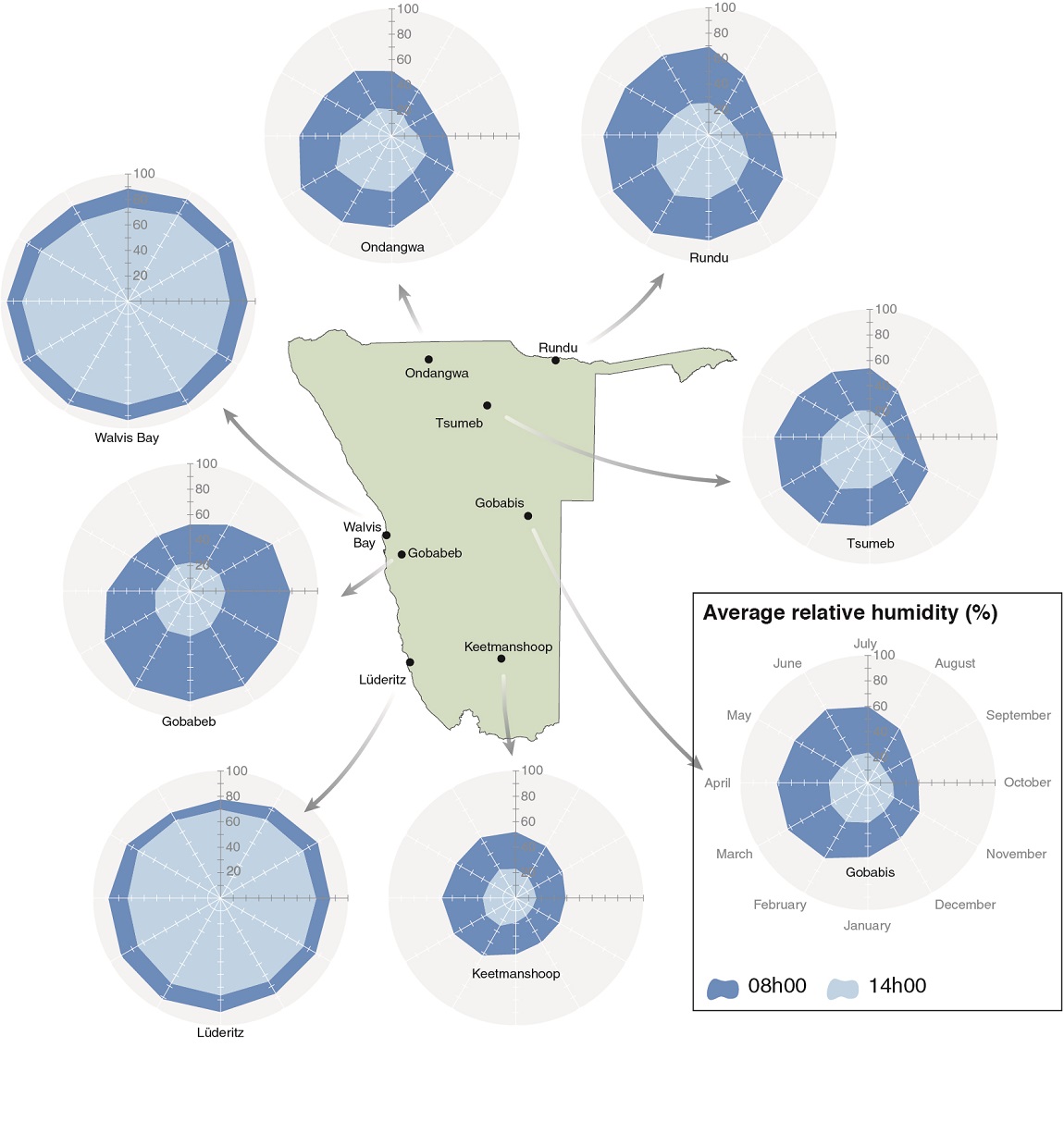Humidity
Air moisture content – or humidity – is a measure of the amount of water vapour present. The temperature of the air affects its humidity since cold air can hold less water vapour than warm air before it condenses. Relative humidity is thus the amount of water in the air in relation to what it can hold at a given temperature, and it is this percentage saturation that is used to compare air moisture levels. Relative humidity values are usually highest early in the morning when the air is coldest.
3.19 Relative humidity during the least and most humid months30


Over most of Namibia, average relative humidity values vary a great deal between the driest and wettest months. The exception is the narrow belt along the entire coast that experiences moist maritime air throughout the year. During the least humid months, humidity east of the escarpment is generally less than 20 per cent. By contrast during the most humid months, values are around 80 per cent in northern Namibia and 50–60 per cent in the south. Humidity values in the driest months are measured at 14h00 while those in the most humid month are taken in the morning at 08h00, as these are the times when the lowest and highest values, respectively, are recorded.

Photo: JB Dodane

Photo: K Hilgers
The typical blue skies of winter are replaced in summer with convective cloud formation following the influx of moist air from the north and east
3.20 Changes in relative humidity during the year31

When interpreting differences in relative humidity between months, bear in mind that values are influenced both by air moisture and air temperature. At the same moisture levels, cold air will be closer to saturation than warm air. For most inland locations, the months with the lowest average humidity values are August, September and October because the change from winter to spring brings warmer temperatures, but moisture levels in the air are still low. The daily temperature range (figure 3.17) is reflected in the much higher humidity levels recorded in the morning compared to those in the early afternoon at these locations. Rundu, for example, has humidity levels in the morning (08h00) that range between 50 and 70 per cent while at 14h00 they range between 20 and 40 per cent. By contrast, the coastal towns of Lüderitz and Walvis Bay have consistently high humidity values throughout the year (70–90 per cent) and only vary a little between morning and afternoon. The lowest humidity values throughout the year are recorded in the southeast where solar radiation and temperatures are high, but rainfall is low.

Photo: V Morgante
Areas close to the coast, in contrast to the interior, have consistently high relative humidity levels throughout the year and frequent fog. This saturated air often extends further east from the coast, especially along lower-lying ephemeral river valleys. Here it casts an eerie grey backdrop over the wildlife supported by this river course.

